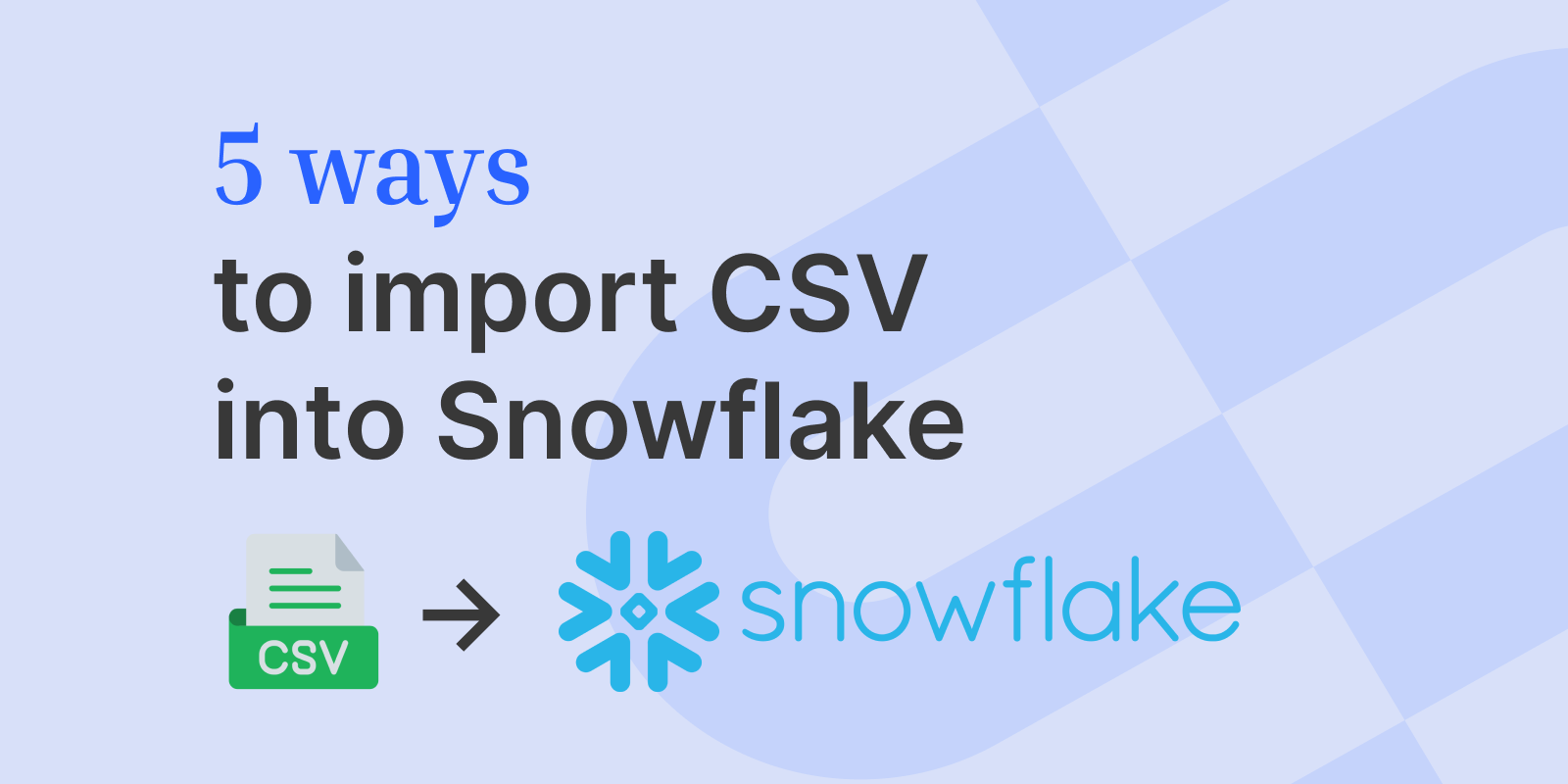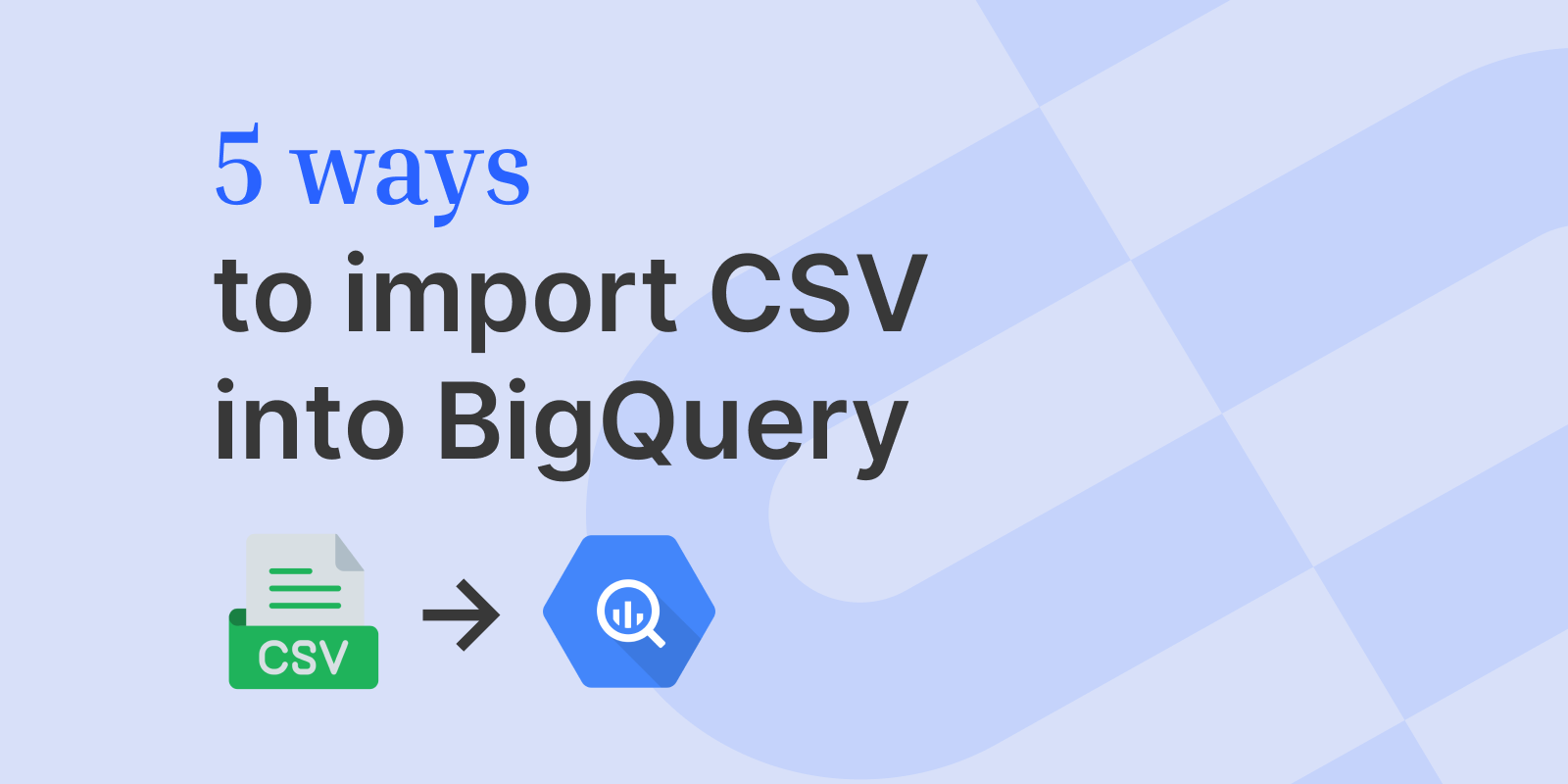How to Import CSV into MongoDB
MongoDB, a leading NoSQL database known for its schema flexibility and boundless scalability, excels in handling diverse data types and complex data structures. This article examines five methods for importing CSV files into MongoDB, catering to different scenarios and requirements.
Andrew LuoAndrew is the co-founder & CTO at OneSchema.
May 13, 2024
MongoDB, a leading NoSQL database known for its schema flexibility and boundless scalability, excels in handling diverse data types and complex data structures.
This article examines five methods for importing CSV files into MongoDB, catering to different scenarios and requirements. Let’s dig in!
Method #1: mongoimport Tool
The mongoimport tool, bundled with MongoDB, is a straightforward command-line utility for importing CSV data. It parses the CSV file and imports it into the specified collection. mongoimport provides options to specify the data types of fields, handle array fields, and ignore or include specific fields.
Use case
Ideal for simple, one-off imports without the need for complex data transformations.
Example usage
mongoimport --db your_db --collection your_collection --type csv --file /path/to/your_file.csv --headerline
Note: The --headerline option assumes the first line of the CSV contains field names.
Method #2: MongoDB Compass
MongoDB Compass, the official GUI for MongoDB, offers an intuitive interface for importing CSV files. You can visually map CSV fields to collection fields and preview the data before import. Compass also lets you modify field types and array structures during import.
Use case
Suitable for users preferring a graphical interface, with the added benefit of data preview and mapping.
Example usage
- Open MongoDB Compass and connect to your database.
- Navigate to the desired collection.
- Select the "Import Data" option and choose your CSV file.
- Configure the import settings and field mappings as needed.
- Start the import process.
Method #3: Using Python with PyMongo
For more control and customization, a Python script utilizing the PyMongo library can be employed. This method is excellent for preprocessing data, handling complex logic, and automating CSV imports.
Use case
When you need to programmatically preprocess data or automate imports.
Example usage
- First, install PyMongo:
- Then, use a script like this:
python
import csv
from pymongo import MongoClient
# MongoDB connection
client = MongoClient('mongodb://localhost:27017/')
db = client['your_db']
collection = db['your_collection']
# CSV file path
csv_file_path = 'path_to_your_csv.csv'
with open(csv_file_path, mode='r') as csvfile:
reader = csv.DictReader(csvfile)
for row in reader:
collection.insert_one(row)
Method #4: Third-Party Tools like Studio 3T
Studio 3T is a third-party MongoDB GUI that offers advanced features for managing MongoDB, including importing CSV files. It provides options for field mapping, data type transformation, and importing to existing or new collections.
Use case
For users seeking a more feature-rich GUI with advanced importing capabilities.
Example usage
- Open Studio 3T and connect to your MongoDB instance.
- Navigate to your database and collection.
- Choose the "Import" option and select CSV.
- Map the fields and configure import settings.
- Execute the import process.
Method #5: Custom ETL Pipelines
Creating custom ETL (Extract, Transform, Load) pipelines using tools like Apache NiF, Talend, or Airbyte can offer extensive flexibility and scalability. This approach is useful for integrating CSV imports into larger data processing workflows.
Use case
Best for complex, large-scale data integration scenarios where CSV import is part of a larger data pipeline.
Example usage
- Set up your ETL/ELT tool
- Create a new workflow to import CSVs
- Configure the CSV reader and any necessary transformations
- Execute the pipeline to import data.
Conclusion
Importing CSVs into MongoDB can be approached in various ways, each catering to different needs and complexities. For simple, one-time imports, use mongoimport and MongoDB Compass. For more complex scenarios involving data transformation or integration into larger workflows, Python scripts or custom ETL pipelines are more suitable.
If you’re looking for a comprehensive CSV import solution, consider OneSchema. OneSchema provides a powerful CSV parsing and importing tool that seamlessly integrates with your front-end framework of choice.








